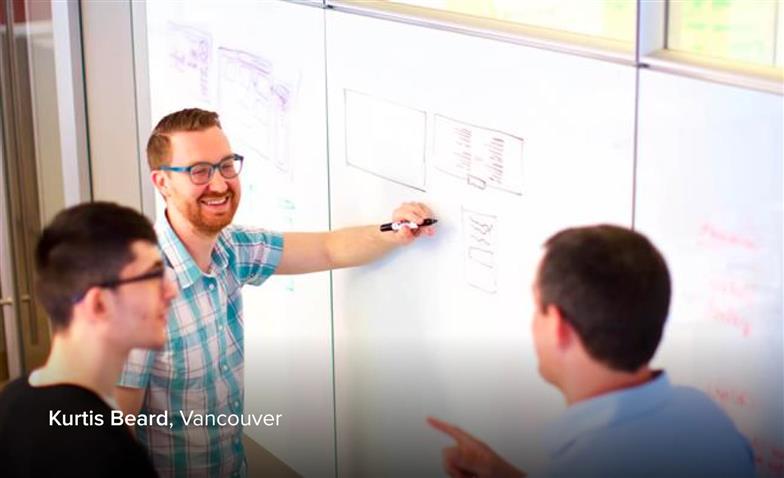Culture change can feel mysterious, uncertain and challenging to navigate. It asks people to step into complexity and ambiguity, make what can be hard to see visible, and to continue to sense and respond to find the way forward.
However, there are some very solid principles that will serve you well in navigating and shaping culture change.
This post is for you if:
- You’re working with us on a culture change initiative
- You’re guiding or supporting culture change
- You’re curious about how a somewhat mysterious activity happens!
Below are things that will help you better understand and participate in culture change.
1. Be a gardener, not a mechanic
This is very important. If you’ve been part of culture or other complex change that has gone nowhere, there’s a decent chance it was approached in a mechanistic way, which is not conducive to working within complexity.
If you’re renovating your office or implementing a new technology, change management tools designed to break activities down and identify concrete milestones and linear task lists will likely serve you well.
Or, if your car isn’t running properly, looking under the hood for the source of the breakdown and taking steps to fix it is the right approach. I highly recommend you call a mechanic (and not a gardener) in this situation.
However, people, and the organizations they are part of, are dynamic, living systems – not machines. They therefore need to be approached like complex ecosystems that are both made up of and a part of other ecosystems.
It can be a very interesting activity to imagine your culture as a garden, and ask these questions:
- How healthy is this garden in terms of what we need it to provide?
- What is needed in the garden, but has become overgrown (and is potentially choking or impeding the growth of other things)?
- What do we want to weed out of the garden? For example, unproductive behaviors, like blaming, avoiding issues, etc.
- What needs attention to grow in a healthier way?
- What green shoots are offering opportunities?
- What does our environment support? What does it make challenging?
- What will make our garden healthier and stronger?
2. Be willing to try on new glasses
While new or strengthened skills can support culture change, it’s our ability to see things from a new perspective that allows for real change to happen.
Example
If an organization wants to become more creative and collaborative, employees may need to develop skills and behaviors to support the change. However, if they see “messiness” and imperfection as enemies to be avoided vs potential friends, simply learning new skills won’t lead to different practices and outcomes. Instead, if employees adopt a new set of glasses that sees “messiness” in a new way, it will create more meaningful change.
Often when you see something in a new way, new habits and behaviors naturally flow from the new perspective. If I can see that spending time in messiness and imperfection leads to richer, more creative and beneficial results, even without deliberately building specific skills, I will do new things based on the new things I see.
It’s therefore incredibly valuable to help people to understand that they’ve been wearing glasses that have been guiding what they see. This means surfacing the beliefs that underpin a culture and the source of the assumptions behind them. Usually, the assumptions behind them made sense at some point. However, they can then get very embedded into an organization, and using our garden metaphor, either become overgrown, or the environment and conditions change, requiring a new way of looking at things.
3. Be open to unlearning
Unlearning supports the ability to see things in new ways. It’s very hard (if not impossible) to see things in new ways and “update” your perspective without unlearning something.
If you learn an important new skill or behaviour, but it’s placed within an outdated mental structure, you won’t receive its benefit.
Example
If you learn Agile practices but continue to believe that things are only successful when everything is defined and planned upfront, you won’t be able to effectively use those tools.
Or if you learn skills to have tough conversations, but you believe that people need to be shielded from discomfort or accountability, you very likely won’t make use of those skills.
Unlearning is also largely supported by surfacing and then questioning the beliefs that get people stuck in achieving their goals.
4. Uncover the beliefs, stories and myths guiding the culture
This activity is at the heart of understanding what is driving a culture. Organizations are driven by belief systems that have developed over time. To varying degrees, beliefs can remain useful and supportive or become overgrown or outdated. Identifying the belief system of an organization – and to what degree it is of service – is at the heart of guiding culture change.
Getting back to our garden metaphor, beliefs can be so deeply planted and largely unquestioned, that it can take a bit of digging to get to the root of them. You then need to assess what has been overgrown and/or in need of some composting. (That garden metaphor is really working here!)
5. Sense what’s ending and what’s beginning
This activity requires some heavy lifting. You need to tune into the whole system of the organization, including both internal and external forces.
Listen deeply to what matters most to the organization, what it wants to achieve, the possibilities available to it, and the forces that are supporting and challenging its goals. Identify what is ending and what new things are beginning.
Here are some questions you can ask to guide this activity:
- What beliefs, stories and myths are guiding the organization?
- What stories are winding down?
- What stories are emerging?
- What does the organization want to achieve?
- What is ending and beginning within the ecosystem of the organization, and the ecosystems it is part of?
- What opportunities are emerging?
6. Choose the ideas and new stories to support
Following our gardening metaphor, decide what ideas, beliefs and stories you want to align with – the existing ideas and beliefs you want to keep and new ones that are emerging.
These ideas and stories can then be guided and supported in different ways, such as:
- Embedding them in your purpose and values
- Enabling your organization to live them through its people, processes and systems
- Making them visible and present in a way that makes most sense for your organization
7. Give permission to violate previous agreements
This does not sound very friendly, but actually it is!
When making a change – whether it’s a commitment to turn the dial down on perfection, to be more holistic in managing risk, or to be more inclusive – deeply embedded habits and norms will need to be disrupted.
You need to give permission for past agreements to be violated in order to support a change in another direction.
Norms and agreements can become so embedded that it can be hard to see them, so it’s extremely helpful to articulate the agreements people have been complying with.
Examples of embedded norms include:
- “We agree to consult everyone who could possibly have an opinion on this initiative.”
- “We agree that everything we share with each other is polished.”
Be explicit in when and where it’s needed and welcome to disrupt these agreements.
8. Be reassured by discomfort
It’s not a good sign if you’re part of a culture change and you at no point feel a bit uncertain, lost in messiness, unclear about next steps, or even somewhat unmoored.
Culture change requires seeing deeply held beliefs in a new light, disrupting habits and finding new ways of seeing and doing things. Therefore, if you don’t feel you are leaving one zone you’re familiar with for one that you are not, you likely aren’t on the path of culture change.
Discomfort (which can be enjoyed or not enjoyed to varying degrees) indicates that you’re going somewhere new, so please take it as the good sign that it is.
9. Keep the most important questions alive
Most of us tend to like answers much more than questions.
However, it has been said “inquiry is intervention.” Keeping an important question alive for people is, in and of itself, often one of the best interventions there is.
I think the most meaningful questions are like metal detectors. The more ground you cover with them, the more treasures you will find. In other words, keeping a great question open for a period of time will be more fruitful than grabbing the first answer you find.
This means it’s important to help people have increased awareness that:
- The most important and impactful questions don’t have single answers for single situations. “How might we build relationships across teams?” or “How might we enable a culture or learning and development?” are not questions that can be answered in a single meeting, and you are shortchanging the question if you considered it answered in too short a time period.
- We need to build the capacity to live inside of questions when dealing with complexity. This does not mean being closed to answers (or action), but it does mean not prematurely closing the question before we’ve received its full benefits across groups and teams.
10. Foreground the relationships between people
Culture is by definition relational. You can’t even have it without other people; it comes into being through shared beliefs, narratives and agreements. This means that changing it will also largely happen through people’s relationships with each other.
An essential part of culture change is bringing people together and enabling dialogue and interactions between them, not simply telling the individuals in the organization what they need to do via bureaucratic means. The more conversations people have with each other about what is needed, the more they will connect themselves to the change and help make it happen.
It's also important to create a culture where everyone is seen as a culture creator, building culture through their actions and interactions. This can be done by approaching culture in a co-creative way, and in addition to leadership support, creating and supporting diverse networks of people around the organization who, alongside leaders, are actively involved in identifying the questions that the organization most needs to respond to and shaping the culture going forward.
Embracing your role in culture change
I hope that the ideas above have helped you feel culture change feels a bit less mysterious, uncertain and challenging to navigate. I can assure you that most people tend to find being part of culture change very rewarding, and it’s often even a career highlight to be part of creating a workplace culture that enables the organization and its people to be successful. I hope no matter what your role is in culture change, that you found something to help anchor and guide you in shaping what you want to see in your organization.






